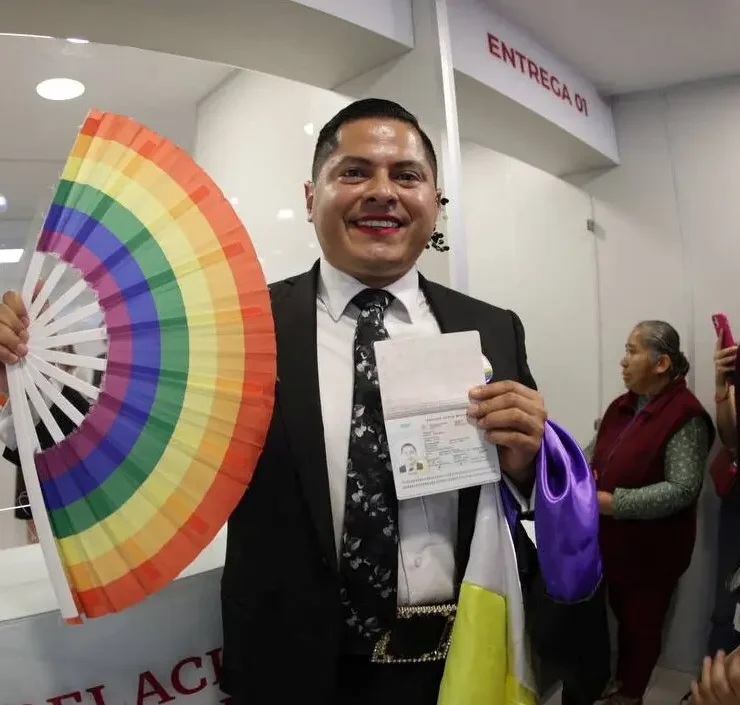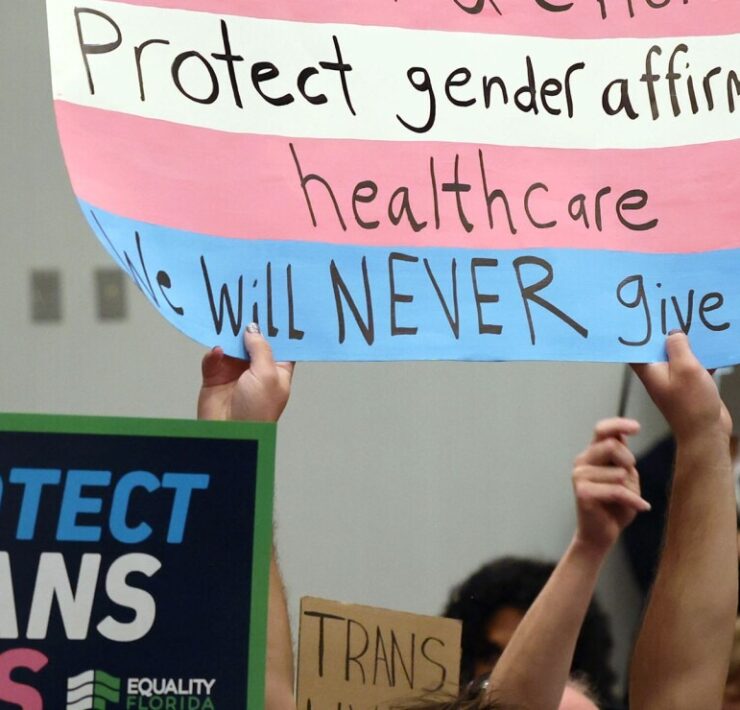OFM Breaking News: June 2023 Print Edition

Ray has with OUT FRONT Magazine since February of 2020.…
A Year Without Roe v. Wade
As we enter June, we dawn on the one-year anniversary of the Supreme Court decision to overturn Roe v. Wade, the case that established a constitutional right to reproductive health care including abortion access. Now, that right is left up to the states. Since then, we have seen states codify protections for abortion access and some put harmful bans in place.
The majority opinion in Dobbs v. Jackson Women’s Health Organization upended nearly 50 years of precedent set within the court. After the passing of former Supreme Court Justice, Ruth Bader Ginsberg, the Trump Administration was able to shoehorn in conservative Justice Amy Coney Barrett officially giving republicans control of the highest court in the country.
Legislatures had been preparing for the shift for years, enacting laws that would either protect or outright ban abortion within their states should Roe v. Wade be overturned. Thirteen states had “trigger laws” which would effectively ban nearly all abortions after the Dobbs ruling took effect.
The laws in three of those states—Kentucky, Louisiana, and South Dakota—took effect immediately after the court’s June 24, 2022, decision, while laws in Idaho, Tennessee, and Texas were designed to take effect weeks later. Trigger laws elsewhere required certification from attorneys general, governors, or other state officials to take effect.
Nine states had abortion bans which predated Roe v. Wade but were nearly unenforceable during the five decades where abortions were protected rights. In Arizona, a state court judge in September 2022 lifted a 50-year-old block on a mid-19th-century law banning nearly all abortions in the state. A state appeals court temporarily halted enforcement of the law two weeks later. A Michigan judge blocked the state from enforcing a 91-year-old law which banned most abortions following lawsuits from reproductive rights groups.
Some states went as far as to penalize medical providers or private citizens who are found to have assisted in a patient seeking abortion access. A 2019 Alabama law making it a felony for doctors to perform an abortion at any point during pregnancy—with exceptions in cases when a mother has a serious health risk—went into effect June 24, 2022, after a federal judge agreed to lift a previous injunction.
In response, more than a dozen states have passed protection for those seeking abortion access. Four states and the District of Columbia protect the right to abortion access throughout pregnancy. States such as New Jersey and Colorado passed safe haven laws that would prohibit state agencies in cooperating with investigations against those who came into the state seeking abortion access.
In the private sector, large corporations including Amazon, Starbucks, and Target have promised to pay for the travel expenses and time taken off for employees who would now need to travel across state lines for abortion access. However, the cynic in me compels me to inform readers that doing so has been found to be less expensive for these corporations than providing maternity leave.
In April, we saw Texas U.S. District Judge Matthew Kacsmaryk attempt to block access to the medicinal abortion known as mifepristone. The case was taken to the Supreme Court where Kacsmaryk’s original ruling was overturned, allowing clinics to continue to prescribe and send the drug to patients via mail.
The most disturbing story to come out of this is that of Anya Cook, whose water broke at 16-weeks long before the fetus could survive outside the womb. Cook was turned away by doctors at the Emergency Room in Coral Springs Florida due to the state’s newly enacted law that bans all abortions. Later, while getting her hair done at a salon, Cook miscarried the fetus into a public toilet. Her traumatizing story made national news as an example of the pain and deadly risk these bans thrust upon pregnant people.
Throughout the year, there have been protests and public outcry in response to limited access to abortion services. A year after the overturning of Roe v. Wade we see a country splintered with protections and bans, leaving patients to either travel across state lines or to suffer without the help of medical professionals. Other laws infringing on bodily autonomy like bans on gender affirming care and freedom of gender expression are further deepening the fissures between states.
Conservatives at the state level are attempting to make certain parts of this country inhospitable to women and the LGBTQ community. The question remains on whether they will succeed in this.
Denver’s Mayoral Runoff Candidates
The runoff election for Denver’s mayor as well as several city council member seats is quickly approaching. Many Denver voters have already received their ballots by mail and may have even cast them. Though the official election day is June 6.
With the candidate pool narrowed down from 17 to two, we wanted to provide Denver voters with a more in-depth look at their choices for mayor.
Former Senator Mike Johnston received 24% of the votes in the initial election, making him the most voted for candidate out of the 17. Runner up with the second most votes was former CEO of Denver Metro Chamber, Kelly Brough who received 20% of the vote. Interestingly enough, the two also happened to have the best funded campaigns. Both had raised well over $1 million in campaign funds, and individually each ran super PACs which spent record figures.
One of the largest and most hotly debated issues in the initial election was, of course, the issue of homelessness. Both Johnston and Brough promised to put an end to what they called “street homelessness” if elected mayor. Johnston promised to do so within his first term, and Brough promised to have it done even sooner, within her first year.
Johnston’s plan includes building 20 ‘micro communities’ made up of tiny homes and converted hotels. The idea behind these would be to allow communities of unhoused people to remain together while being moved off the street into transitional housing. Johnston’s plan also includes wrap-around services for addiction treatment and mental health, as well as protections against eviction and displacement.
Brough’s plan involves updating the city’s shelter system as well as diversifying Denver’s housing options. She also boasts that a core pillar of her action plan against homelessness is “courage.” Brough explains that in order to tackle this issue, lawmakers much balance the needs of the unhoused with the needs of the broader community, and cites various health and public safety issues that arise with long term homelessness.
Both candidates support the contentious encampment sweeps, and Brough has expressed support those arresting those who do not wish to be moved into shelters or temporary housing.
On climate, Johnston aims to eliminate Denver’s green house gas emissions by 2040 by updating public transportation and implementing more bike and pedestrian infrastructure. His plan also includes converting much of Denver’s energy sources to electric and solar where applicable. Brough’s plan for climate changes matches many of her opponents with an increase in public transportation and safer bike or walking options. Brough’s plan also includes addressing the “western water crisis” concerning the over use of the Colorado River.
Where they differ; Johnston’s campaign website specifically mentions his plans to protect the rights of those seeking abortions and reproductive health care, as well as his plan to improve working conditions for Denverites. Brough’s website contains her plan to reduce gun violence in Denver public schools by strengthening the city’s gun laws and gun-buy-back programs.
An Axios poll published in April showed a tight race with Johnston leading by just 2.8%. With a margin of error at 4% and roughly 27% of voters left undecided, it could be anyone’s race. The poll also found that 54% backed Brough’s plan to arrest people experiencing homelessness who refuse to leave the streets for a shelter or sanctioned camping site. Thirty-two percent opposed the idea.
What's Your Reaction?
Ray has with OUT FRONT Magazine since February of 2020. He has written over 300 articles as OFM's Breaking News Reporter, and also serves as our Associate Editor. He is a recent graduate from MSU Denver and identifies as a trans man.










